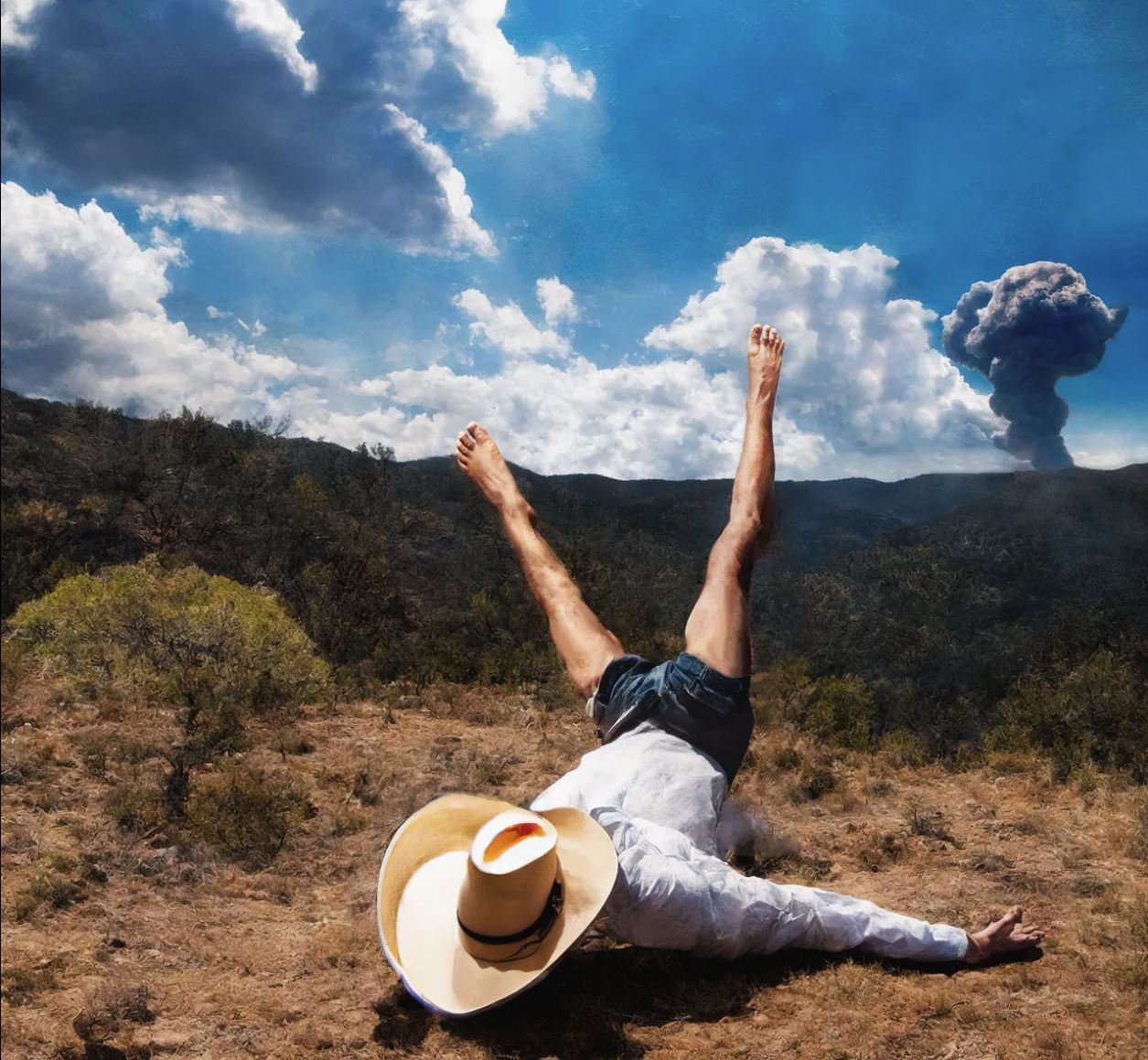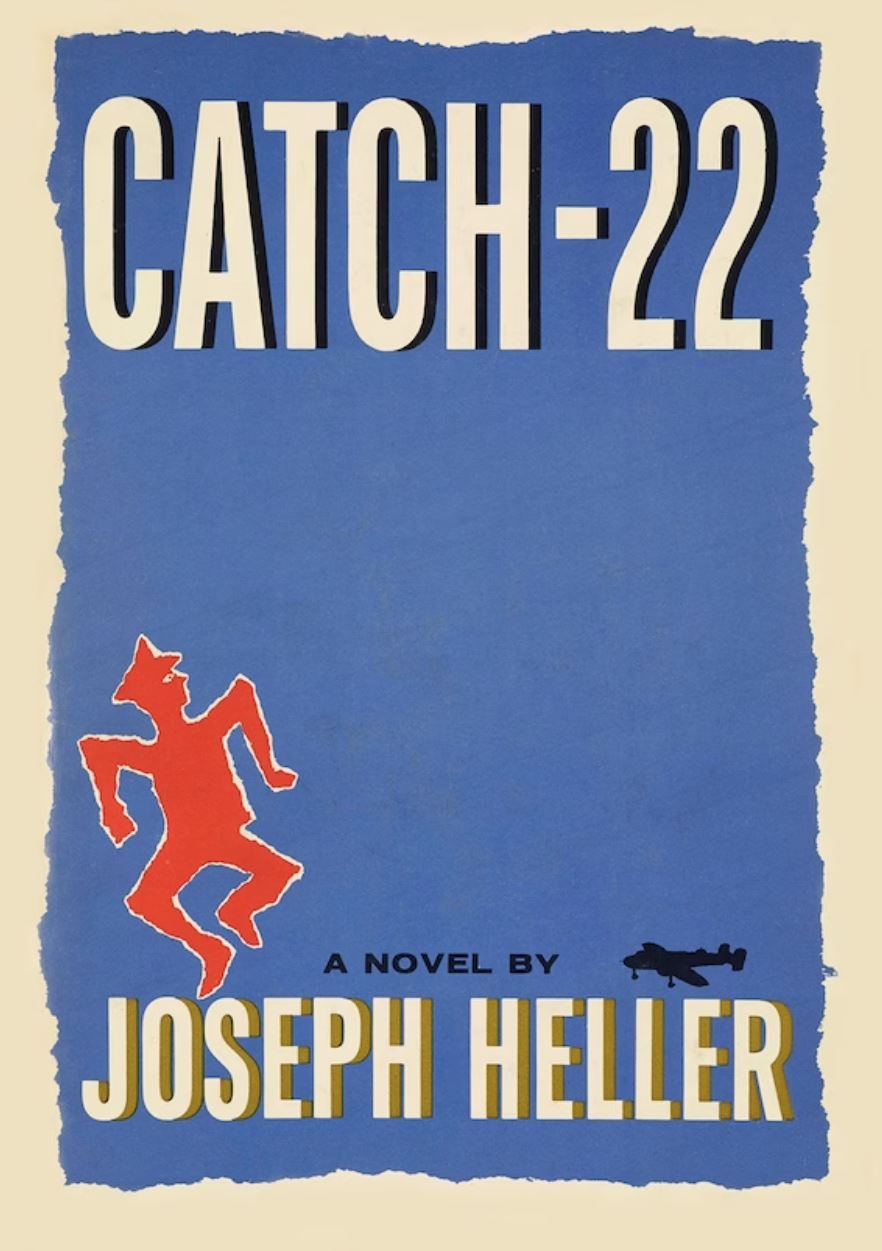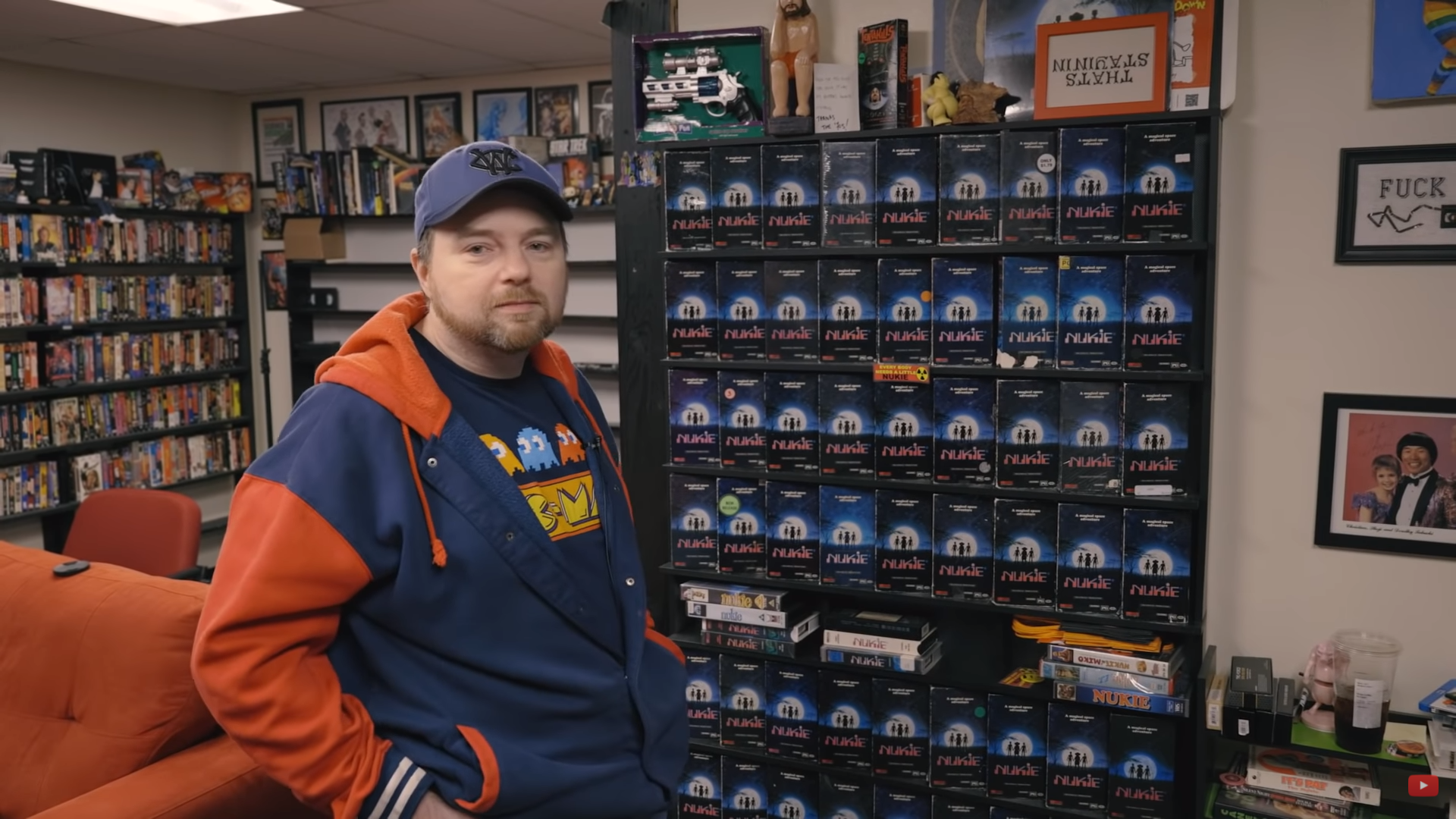My 2023 in Art and Media
At the end of each year I like to look back at the art that stuck with me the most. In part because I think it'll be fun to look at in the future, but also because it helps me understand my own thoughts on it all. This year I wanted to put my thoughts out there in the hopes that something I share will resonate with someone else too. I'm not restricting myself to this year's releases, they just had to play an important part in my own year. This is not a "best of" list, it's more like a journal entry. Hopefully a readable one!
Geese - 3D Country
(2023)
Genre fusions are a mixed bag. It's all too common for a band to fuse a few genres together and end up sounding like mere novelty. Geese is not one of these bands. While you can certainly hear their influences, the jazzy song structure of "2122", the country crooning in the title track, or the post-punk experimentation heard in "Mysterious Love", what makes 3D Country great is its ability to avoid sounding too much like any of the genres it celebrates. With hesitation I would label 3D Country "indie-rock" but that kind of tag is hardly indicative of Geese's sound. This is boundary-pushing rock music. Provided the right ears hear them, I could see Geese ushering in a new era of rock in the same way The Strokes did twenty years ago. Front-to-back the band delivers an extremely fun, memorable, and distinctive album experience. A must listen!
Mulholland Drive
(Dir. David Lynch, 2001)
Lynch is a master at setting a mood. Mulholland Drive juggles suspense, romance, even horror, but the film never lets go of its mystery. Watching the movie for the first time was a gloriously memorable experience. I never knew where the movie was going, but I was on the edge of my seat as if I were in a trance. By the time the credits rolled, everything became clear, but only in the abstract. My conception of what a film could be was changed. The filmmaking and acting is flawless, but an analysis of the production doesn't feel warranted because its approach transcends the medium. Give it a watch, and remember, it's best to go in blind.
Cat’s Cradle - Kurt Vonnegut
(1963)
This was the first Vonnegut novel I read and it won't be the last! The journalist who narrates the book researches the apathy of those related to Felix Hoenikker, the physicist responsible for the invention of the atom bomb. After the narrator spends time with the family, he too gets swept up in their seemingly shallow worldview, but not without a crisis of faith. Cat's Cradle is a hilarious satire on the absurdity of life amidst existential threat. It comments on a wide array of subjects, such as religion, war, even human nature, but it does so with focus because it speaks with such a macro scale. The whole thing reads a bit like The Stranger if Camus was more comic than philosopher. It's brilliant.
Trevor Wisecup
Possibly my favorite discovery in photography this year has been following Trevor Wisecup, a New York based street photographer. Like most, my initial encounter with Trevor's work was through his "Walkie Talkie" interview, which quickly garnered attention online for good reason. The interview revealed a true artist in every sense of the word, from his personality to his unique outlook on life, and it's all shown vividly through his photographs. Trevor Wisecup's photography is extremely varied. Sometimes it's nonsensically funny, other times it's thoughtfully melancholic. But what ties his work together is his fearless, confrontational approach which can be seen in every image.
Rollerskate Skinny - Horsedrawn Wishes
(1996)
What do you get when The Beach Boys, My Bloody Valentine, and The Flaming Lips walk in a bar? I don't know. But I imagine that Rollerskate Skinny would be playing. The Irish rockers take clear inspiration from all the best psychedelic acts, which is to say they're as recognizable as they are original. "Otherworldly" can't begin to describe the ambitious, loud production heard on tracks like "Speed to My Side", which could have been a hit single if the radio dared to play it. Lyrically, frontman Ken Griffin belts poetry with a distinctly hallucinatory tone: "Now the ox has blown the feathers through/The oven door to make the angel's wings/The hallelujah sirens are singing to the aspiring" ("Ribbon Fat"). Beyond the psych-rock influences preceding their time, the band has a distinct mid-nineties sound, which grounds the group despite the fact they're frequently reaching for the stars. For instance, the slacker-rock hooks present on "Cradle Burns" would make Pavement, a band they toured with, proud. Despite the comparisons, Rollerskate Skinny's wide array of influences only further prove that there's nothing which sounds like Horsedrawn Wishes.
George Clanton - Ooh Rap I Ya
(2023)
Ooh Rap I Yah opens with the lyric, "I've got everything that I want", a fittingly optimistic message accompanied by a cinematic, synthy wall of sound. George Clanton has been cultivating a production style of his own for the better part of ten years now and with this album he's delivered everything he's been building towards. The sound on Ooh Rap I Yah is nothing short of magical, like a Y2K dance album with an undercurrent of psychedelic bliss. There's a strong theme of contentment, both in the enveloping sound and in the lyrics: "I'm feeling like I'm fucking up my life, [...] And it feels alright", he sings on the aptly titled "F.U.M.L.". The nostalgic 90s-2000s production style does a great job of tying together analogue synths with a more modern sense of electronica, but ultimately these songs are so well crafted that the production transcends technical know-how. George Clanton is as strong as ever, and it seems like the further back he looks, the better he gets. If that's the case, let's hope an 80s throwback is next!
Catch-22 - Joseph Heller
(1961)
Writing about the classics is an impossible task, especially for one with the reputation of Catch-22, so I won't pretend that I have anything of substance to add. What I can give is a personal endorsement: Catch-22 is the only book that has made me laugh out loud numerous times (The character of Major Major Major becomes funnier with every mention) and after finishing it I immediately wanted to read it again. Joseph Heller writes a genius satire about bureaucracy, taking full advantage of its WWII setting to make all sorts of messages about power, responsibility, and conflict, but you probably knew that.
Saltburn
(Dir. Emerald Fennell, 2023)
Saltburn feels like classic literature. It takes its time, it's classy, and most of all, it's intelligent. The way it plays with genre conventions, both vampiric literature and cult-like horror cinema, is ripe for conversation, which is why it's a shame not many are talking about it. Emerald Fennel's vision is flawless. She brings focus to a rich story that could easily feel misguided under the wrong direction. Between electric performances from Keoghan and Elordi, a gripping screenplay, and jaw-dropping cinematography, Saltburn is a hypnotic display of great filmmaking. ("Every frame a painting" must have been the on-set motto of Fennel/Sandgren. It's cinematography that deserves to be studied.)
Stars of the Lid - And Their Refinement of the Decline
(2007)
What makes ambient a special genre is that it can be personal to the listener when other music would feel distant. Lacking a clear message is actually a major benefit to these songs because it opens them up. Each piece becomes a blank canvas to paint over with vivid memories or scenes. To me, Stars of the Lid creates music that is existential, yet hopeful. It's the sound of reaching beyond our human limits; facing and embracing the unknown. "Even If You're Never Awake" provides visions of space travel; voyaging into the quiet, infinite darkness that we call space. While always transcendent, the album never loses its earthly feel, with "The Evil That Never Arrived" carrying the sound of a morning sunrise shimmering over morning dew. Each track creates its own unique scene without the album ever feeling disjointed. The ambient duo brings a sense of clarity that makes their two-hour epic sprawling and cohesive, all at once. It's an album that reaches far but never outside your grasp. And Their Refinement of the Decline is an astounding work of art that is as spiritual as it is articulate.
Dig!
(Dir. Ondi Timoner, 2004)
Dig! tells the story of The Brian Jonestown Massacre and their rivals, The Dandy Warhols. Like any good rockumentary, it's got memorable music and an entertaining subject, but what sets Dig! apart is its unintentional hilarity. Put simply, it's a group of self-important hipsters versus a group of pretentious poseurs. You decide which is which. At one point Anton Newcombe, Brian Jonestown's frontman, creates the track "Not If You Were The Last Dandy On Earth", a diss at the Dandy's breakout hit "Not If You Were The Last Junkie On Earth". Naturally, he hands it out for free at The Dandy Warhol's show dressed like a Beatle on a spiritual retreat, complete with a fur hat and sunglasses. Their feud borders on parody, only the bands aren't in on the joke. Comedic or not, the documentary perfectly captures the era where alternative music had influence on major labels and consequently, how the music business tried its hardest to pacify rock n’ roll. It opens up a fascinating conversation about the battle between marketability and authenticity as an artist. That conversation also happens to be incredibly funny.
Red Letter Media
Two guys, sometimes three guys, occasionally more, sit down and talk about movies together. They like them from time to time. Red Letter Media is a YouTube staple. Their famous (or infamous?) seven-part review of The Phantom Menace was uploaded in 2009. Suffice it to say, they've been at this a while and it shows in their highly entertaining reviews. My introduction to Mike, Jay, and Rich, was their scathing fourty-six-minute review of Batman v. Superman, which might be one of my favorite videos on the entire internet. It's obvious that the crew is passionate about film. Each review they tackle is flawlessly produced in its own right, but more importantly they get to the root of what makes a film tick. They do so without pretension because at the end of the day they're not taking themselves, or the movies they review, too seriously.
The Creative Act: A Way of Being - Rick Rubin
(2023)
Rick Rubin, perhaps the most prolific producer of the last 40 years, has become something of a creative monk in recent years. Throughout his public appearances Rubin has shared many anecdotes of his work with legends like Johnny Cash, the Beastie Boys, and Metallica (to name a few), but what's interesting is his lack of specificity. Rubin rarely shares concrete details relating to the music he creates, but instead prefers to wax poetic about creative inspiration. His book is equally undefined, but that's The Creative Act's greatest strength. Rubin's prose is more spiritual than informative and it's exactly why his writing is so inspiring. It's impossible to read a chapter without feeling a creative tug. These are words to act upon. The Creative Act requires a meditative reading to feel rewarding, but if you're an artist of any kind I can guarantee the insight it offers is worth your time.
Oh Me Oh My - Lonnie Holley
(2023)
These are songs from the heart. The honesty that Lonnie Holley offers is arresting. On the intensely claustrophobic track "Mount Meigs" he chronicles the targeted abuse he experienced growing up in a correctional facility during the Jim Crow-era. It's a brutally raw outpouring which is hard to listen to but equally important to hear. But Holley's story, while heartbreaking, is not a tragedy. The heavenly lullaby "Kindness Will Follow Your Tears" meditates on profound human love while the piano-driven ballad "Oh Me Oh My" expresses gratitude in life itself. He has a way of looking at humanity that magnifies both its darkest impulses and its brightest characteristics. Every subject is handled with reverence which is why each track is moving in its own way. Holley translates his experience, every hardship and every insight, into an experience that feels complete; nothing is hidden.
Beau is Afraid
(Dir. Ari Aster, 2023)
A running theme of my 2023 has been embracing the surreal and the absurd. Nothing exemplifies this more than Beau is Afraid. Watching this in theaters was an experience that left me speechless. Even months after its release I find myself at a bit of a loss when it comes to describing the film. Here's a few simple words that come to mind: strange, funny, erratic, anxious, weird, unique, scary, captivating. The film is a three hour odyssey through the world as Beau, a troubled Joaquin Phoenix, sees it. I'll leave the rest up to your imagination. If you were to ask me exactly what the movie is about, I could only offer vague interpretations, but the film Ari Aster delivers is so visceral that it guarantees a lasting impression.
Jack Davison
Jack Davison is a photographer with an eye for surreal, unsettling, and captivating images. His portraits are what stick with me the most. Comparing his photoshoot with Willem DaFoe to his shoot with Cate Blanchett shows that Davison is concerned with more than aesthetics. When looking through DaFoe's images you'll notice a morose and experimental touch. On the other hand, Blanchett's portraits are much more calculated, classy, even exquisite. Both shoots are equally as surreal, but both performers are captured in a way that reflects the work they do. Every time I see one of Davison's photos I am forced to pause and look at the photograph through an analytical lens. I often ask myself two questions when looking at a photo of his: "How did he take that", followed by "Why has no one else done that?" On a technical level, his photos are stunning, but what's more important about his work is that it makes you feel. He creates photos that are uncanny, uncomfortable at times, but always irresistible. His images beg you to stare, which is the mark of any great photographer.














